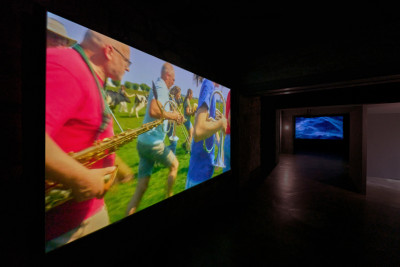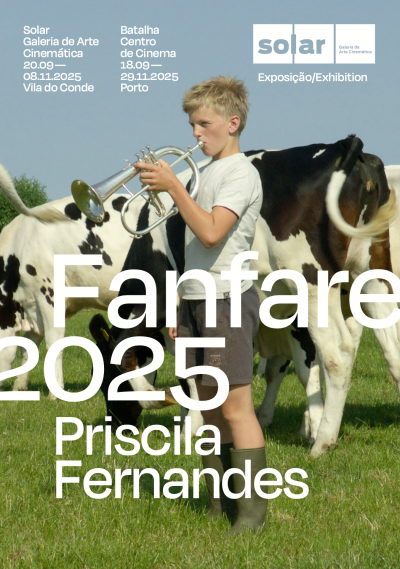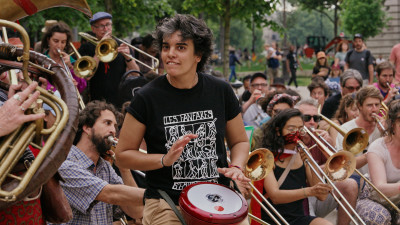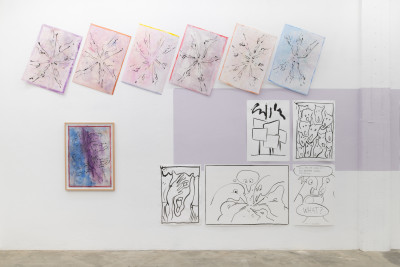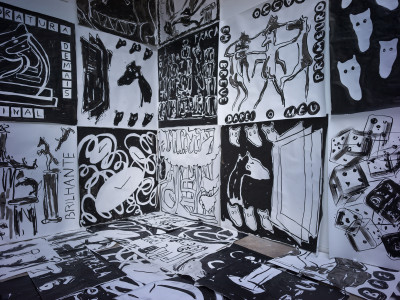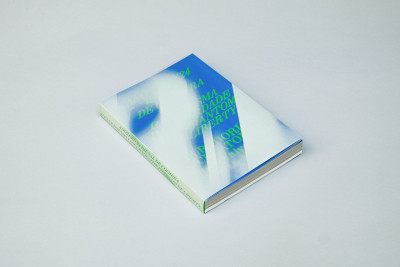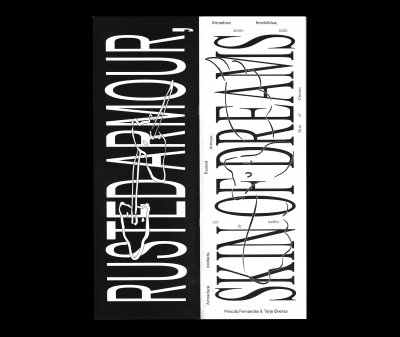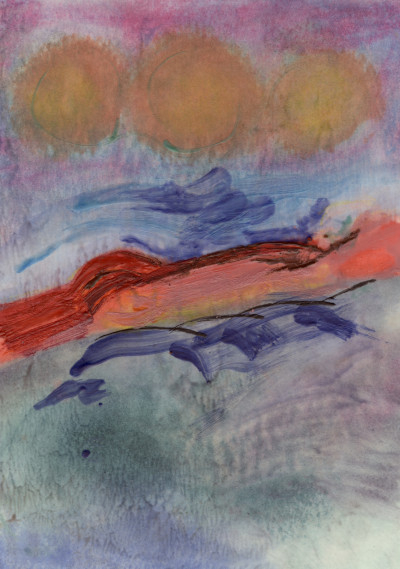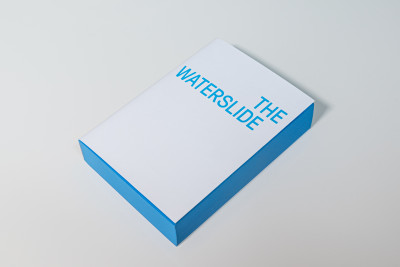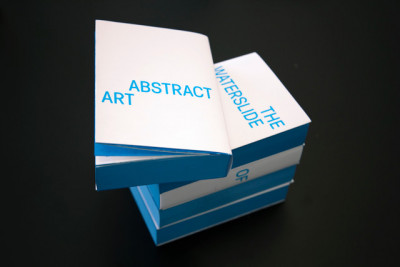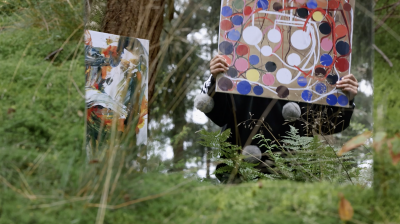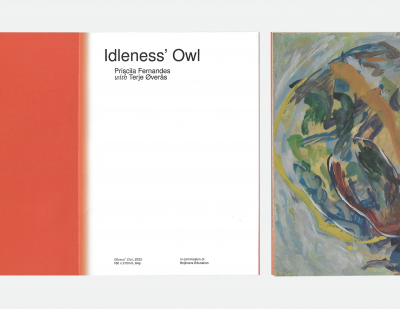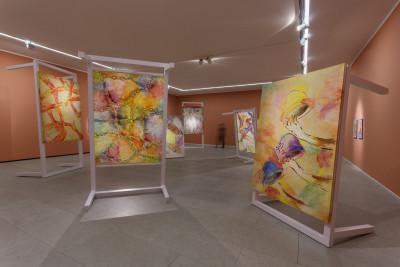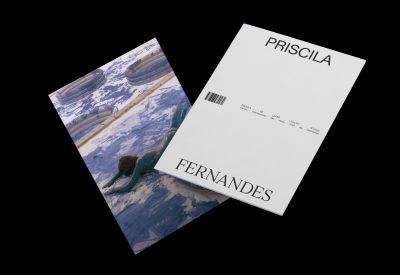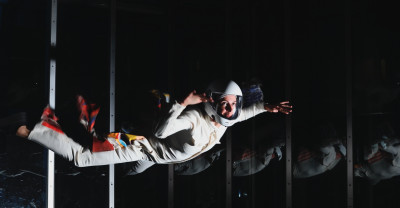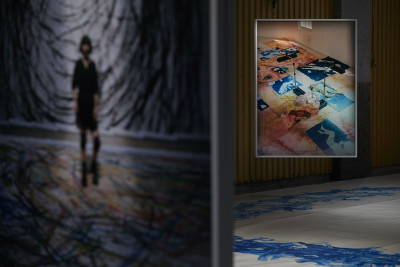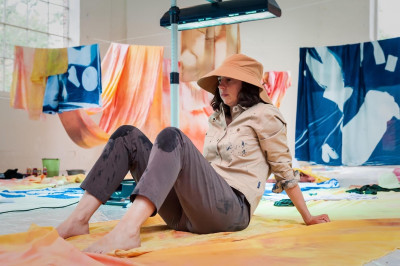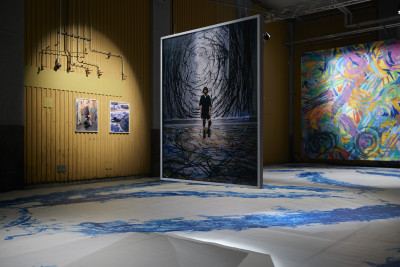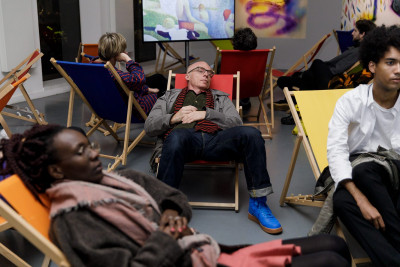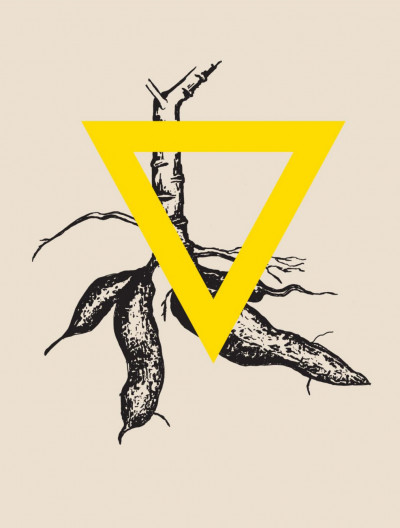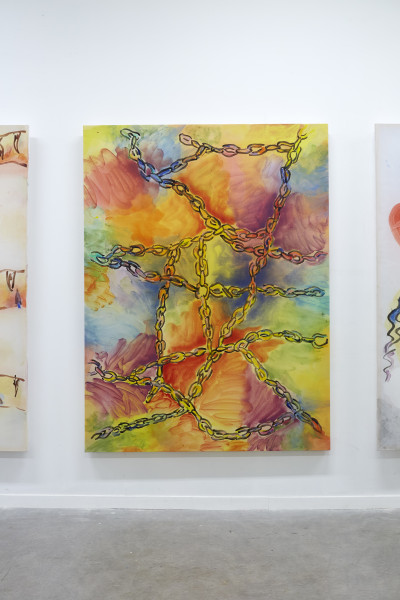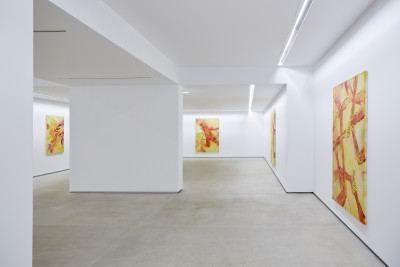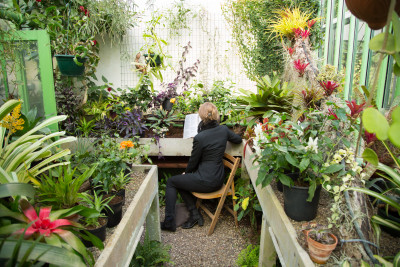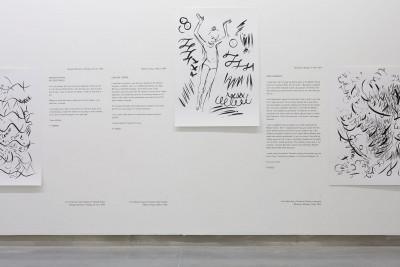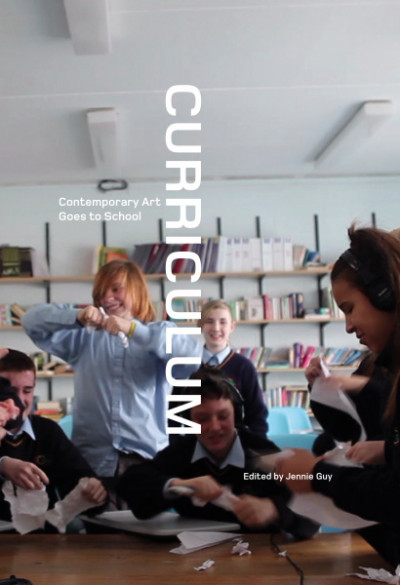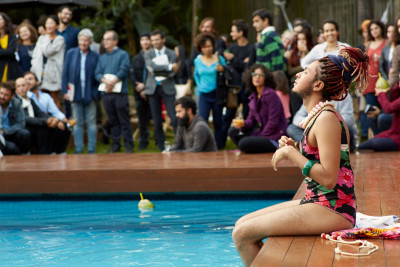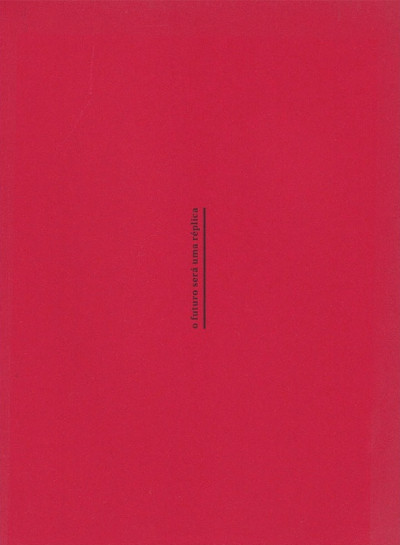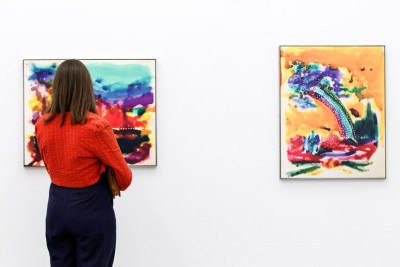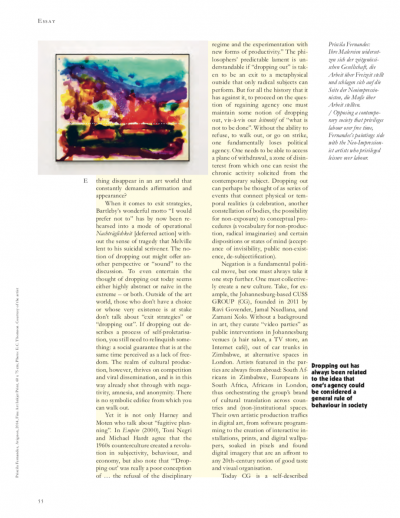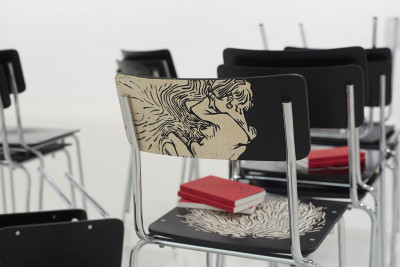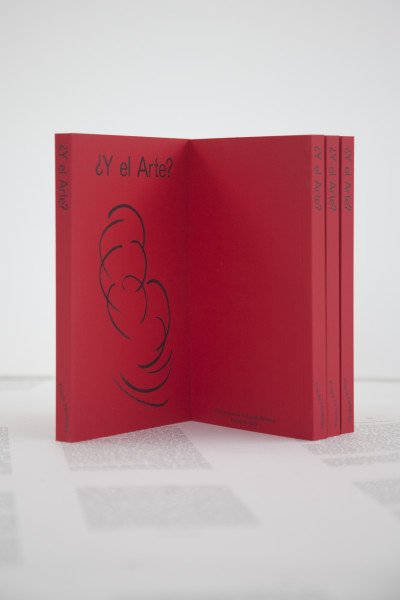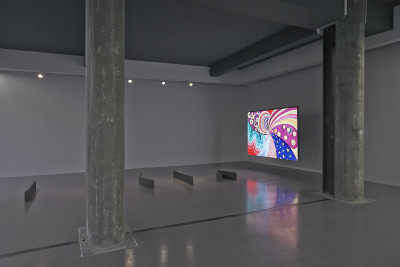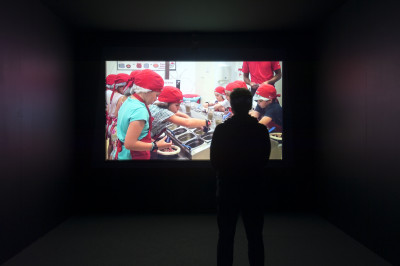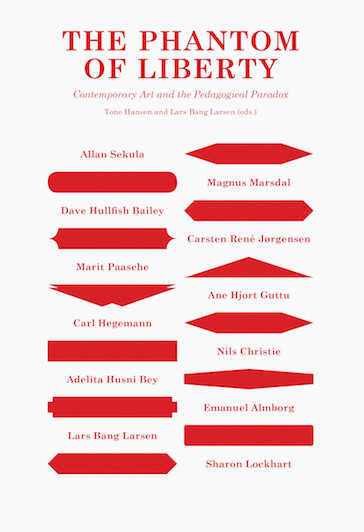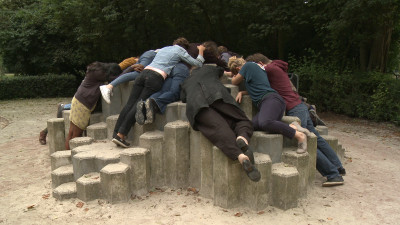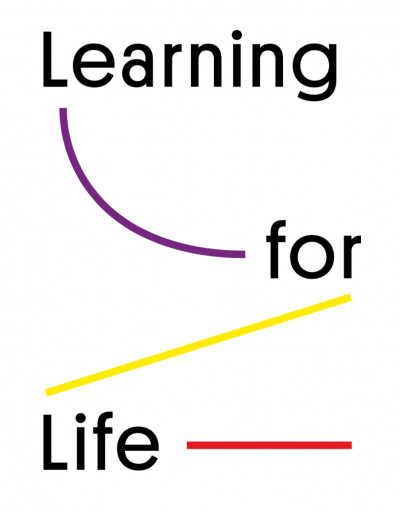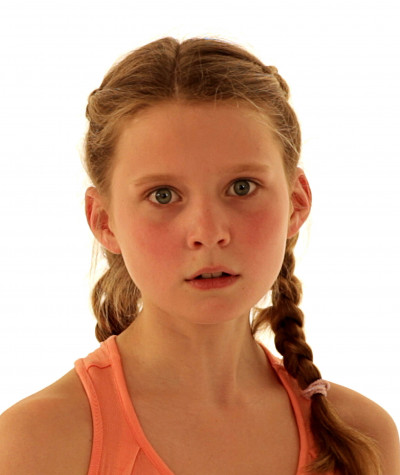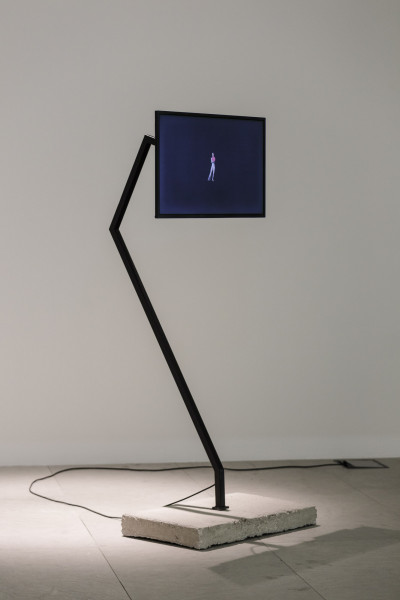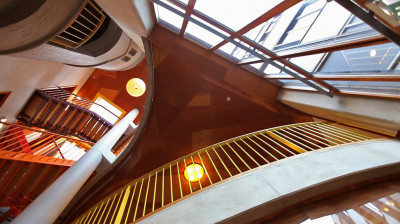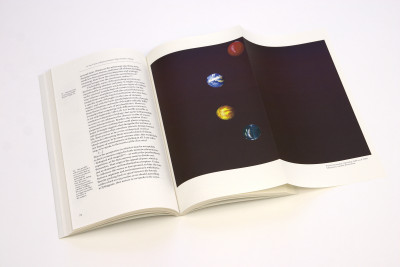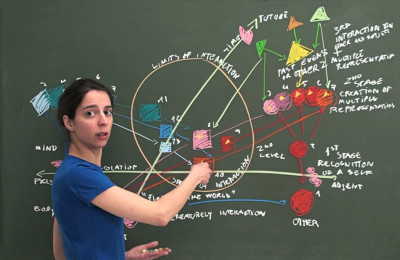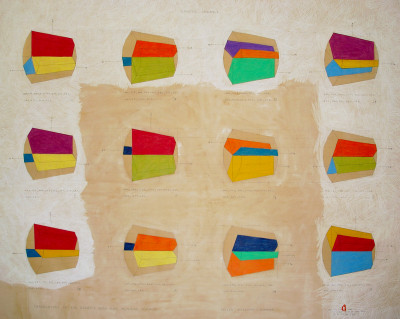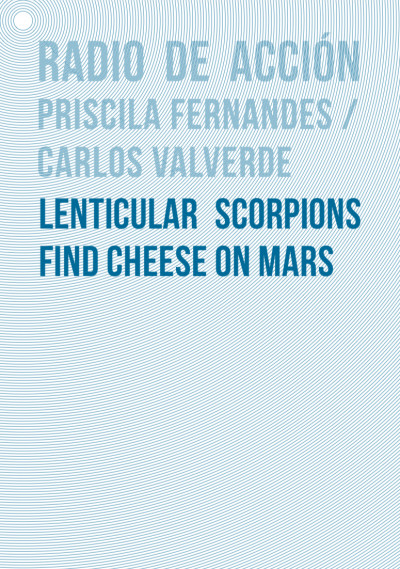Juan Canela
Text accompanying the exhibition at Espai 13, Fundación Joan Miró, part of the long term research and cycle of exhibitions curated by Azotea (Ane Agirre and Juan Canela) titled Lesson 0.
Published in 2014
By Espai 13, Fundación Joan Miró
In 1901, on his return from Paris, Francesc Ferrer i Guàrdia founded the Modern School in Barcelona, a pedagogic project based on a free, rational, secular, holistic and egalitarian education. In an age when education was under the auspices of the Catholic Church, Ferrer i Guàrdia took, as a point of departure, the traditions of Modern Pedagogy and adapted them to the revolutionary message that anarchists and freethinkers were spreading among the new social groups that were created in the wake of the Industrial Revolution. As part of the school, there was also a library, a publishing house, a public lecture room and a series of facilities for extracurricular activities, all aimed at the creation of freethinkers as a reaction to class inequalities and as a struggle to overcome the prejudices of his time.
Although aesthetic education was not part of Ferrer’s programmed curriculum, there are several articles published in the monthly newsletter of the School pointing to the role of the artist in society, and the advantages of including artistic activities in the learning processes. At the death of its founder in 1909, the development of the school was stalled and we can now only wonder how its approach to art would have been like: What artists would have been studied? What texts would have been used? What position the Modern School would have taken in relation to the diversity of artistic and discursive practices of the time? We could also ask ourselves: How can we bring these discourses and questions to the present and update such a valuable legacy despite its being forgotten by the official accounts?
To address this and other questions, the proposal of Priscila Fernandes (Coimbra, Portugal, 1981) transforms Espai 13 into a classroom. Furniture and the necessary equipment for conducting an educational program, reproductions of works of art and posters, as well as a recently published book, are part of an installation with a double function: they serve as the basis for the exhibition and host the activities related to the project. The book ¿Y el Arte? The Book of Aesthetic Education of the Modern School is the starting point. Its title comes from the last article published in the Boletín (the School newsletter), which is also the name of the show. In its pages a series of texts written until 1909 by critics, philosophers, and artists establish a dialogue with reproductions of works of art from the same period. The book sheds light onto the different debates that were held at the time and that could form part of Ferrer’s pedagogical doctrine in relation to art. In Espai 13, the book is placed in different parts of the space, and is available for reading, together with other School publications, which are lent on this occasion by the Fundació Ferrer i Guàrdia.
In the exhibition room, the surfaces of tables and chairs are engraved with abstractions that could remind us of works by artists of that period, even tough, more than their usually subtle and precious lines, they recall student drawings left on desks during class. This furniture is also used at the programmed activities and their placement changes every time, leaving, on each occasion, different geometries in the space. In that regard, Friction Pedagogies, Lesson 0’s educational support program, offers a teacher training course with some sessions open to the public. There, educators, artists and theoreticians will share a debate on initiatives of transformational pedagogy in and around schools, as well as the role of art education and creativity in the context of contemporary forms of cultural production. These activities will be announced in the gallery through a series of posters that will recall the ads of the newsletter, and will be distributed throughout the space together with the rest of the elements, such as a clock or a relief drawing made with chewing gum under one of the tables
Lately, the work of Priscila Fernandes has focused on the ways knowledge is transmitted and on how ideology determines various forms of education particularly when, in our contemporary society, they work in association with games, creativity or productivity. This time, the artist begins with Ferrer’s legacy, developing other relevant aspects of history and the arts of that period, and questioning gaps in them. She stays away from any hint of celebration, commemoration or utopian vision to foster a lively space for discussion and debate, a meeting place where the past merges with the latest educational needs, and where the concepts expressed in the show are activated, rehearsed and implemented in a dialogue with participants, the public, the objects and the exhibition space itself.
Lesson 0 is a long-term, wide-ranging project that reflects on today’s state of artistic education. Curated by Azotea (Ane Agirre and Juan Canela) and developed for the yearly program at Espai 13, Lesson 0 foregrounds proposals that relate to a kind of pedagogy that falls out of the expected in order to explore other forms of conveying knowledge. The program consists of four exhibition projects signed by Priscila Fernandes, Rita Ponce de León, Anna Craycroft / Marc Vives (in collaboration with Rivet) and Eva Kotatkova. They explore, imagine, and try different methods of learning and of establishing relations with the exhibition space. The four projects are set in motion as developments of Friction pedagogies, a teaching support program conceived by Aida Sánchez de Serdio and Cristian Añó (Sinapsis) together with Rachel Fendler. Friction Pedagogies aims to build relationships through negotiation with and between various groups from the art proposals that make up the exhibition program. These collabo- rations aim to foster mutual inquiry among its participants (teachers, artists, students, cu- rators, gallery educators, youth, and cultural and social institutions) on issues related to education and art practices.
READ MORE...
Frans-Willem Korsten
Published in 2015
By Volume #45 : Learning
Looking back on it the endeavour that started in the 19th century from both anarchist, communist and social democratic sides to organize, innovate and provide education for all classes is one of the most impressive known in the history of mankind. Literally millions and by now billions of children that, because of the class they were born in, formerly would have had no access to proper education would be able to get it during the course of the 20th century. This was by no means an Enlightenment project welcomed by all parties in Western societies, and later also more globally. It concerned fierce and relentless battles, and the development of a system of education that would also train teachers willing to soberly and perseveringly serve the high aims set by left wing parties. While in the case of La Escuela Moderna the role of art in this endeavour was not immediately clear, what had become more and more clear in the development of leftist thoughts is how to reorganize society. From being considered to be at least in part a vehicle of ruling class interests, art was to come into a primary, pivotal role in the battle for equality and emancipation. The artistic apex of this reconsideration of art would be the historical avant-garde, which not only saw a central role for art in the process of emancipation but, more importantly, in the battle for what life had become under modern, industrialized, state organized and bureaucratic societies. The political apex of what art should and could do would be forms of socialist realism as they were developed in both the Soviet Union and communist China. Yet in both cases the demands of what the role of art should play turned out to be an overstretched, and even perverse matter.
The issue of this overstretch was explored by the South-African based artist, curator and film director William Kentridge in a multi-screen work from 2008 called I am not me, the horse is not mine in 2008. The title of the work is a literal repetition of a Russian proverb – Я не я, и лошадь не моя (footref: 1). As such the proverb in itself serves to indicate the process of perversion that the Enlightenment, communist project had ended up in. Instead of emancipating all people from all classes and allow them to speak up and take the responsibilities for their own life, the project had led to the negative of this glorious possibility. In many situations it had become a matter of practical wisdom to pretend not to have anything to do with anything and not to speak up, for this is what the proverb means: it is used when, in an awkward situation, one wants to deny having anything to do with it. Used first in circles of poor Russian farmers, Kentridge took it up in another context. His installation uses material from Russian avant-garde art, both in terms of language, design, and music and brings it into dialogue with a transcript from the show-trial against Nikolai Bukharin in 1937, which was almost a closing piece in the vast process of ‘purification’ Stalin had brought about that caused the death of tens of millions and removed all political competitors from the stage.
This is not to say that the communist alternative failed as alternative to what would develop into global capitalism, but surely this variant of communism did. Moreover, it would have to rethink itself in the context of in a post-Fordist variant of capitalism, called by others cognitive, or communicative capitalism (as Jodi Dean called it). In such form of organizing society, real communication is not what is at stake. Daily work demands that we communicate and communication has become equivalent with being a sender. The role of art in this context has become complex to say the least. This is Boris Groys’ analysis:
These days, almost everyone seems to agree that the times in which art tried to establish its autonomy—successfully or unsuccessfully—are over. And yet this diagnosis is made with mixed feelings. One tends to celebrate the readiness of contemporary art to transcend the traditional confines of the art system, if such a move is dictated by a will to change the dominant social and political conditions, to make the world a better place—if the move, in other words, is ethically motivated. One tends to deplore, on the other hand, that attempts to transcend the art system never seem to lead beyond the aesthetic sphere: instead of changing the world, art only makes it look better. This causes a great deal of frustration within the art system, in which the predominant mood appears to almost perpetually shift back and forth between hopes to intervene in the world beyond art and disappointment (even despair) due to the impossibility of achieving such a goal. While this failure is often interpreted as proof of art’s incapacity to penetrate the political sphere as such, I would argue instead that if the politicization of art is seriously intended and practiced, it mostly succeeds. Art can in fact enter the political sphere and, indeed, art already has entered it many times in the twentieth century. The problem is not art’s incapacity to become truly political. The problem is that today’s political sphere has already become aestheticized. When art becomes political, it is forced to make the unpleasant discovery that politics has already become art—that politics has already situated itself in the aesthetic field.
Boris Groys, ‘Self-Design and Aesthetic Responsibility’; e-flux journal #7, 06, 2009.
The perpetual shift back and forth, indeed, between hopes to intervene in the world and the impossibility of achieving such a goal is still characteristic, I think, of current thoughts on the possible role of art. It was in this context, in the spring of 2015, that the cooperation with Priscila Fernandes in her cartography of the role that art could have played in La Escuela Moderna became an inspiring point of orientation. Instead of simply expanding the Enlightenment, leftist, avant-garde project, or instead of considering how it could be translated to our times, the endeavour was more to work the other way around. There is art all over the place, but what about the situation? Here the idea was to chart first, as extensively as possible, what the current situation actually is.
Well, that situation can no longer be defined, generally speaking, in terms of binary opposition or a dialectical logic of exploited and ruling classes. This is not to say that such forms of analysis belong to the past; they can still be very productive and to the point. They can no longer function as the defining frame however, and especially not in relation to art, when cognitive capitalism has internalized pivotal characteristics that once defined the domain of art such as creativity, conceptual innovation, the aesthetic and ethical probing of limits, the exploration of media, etc. They can also no longer function as a defining frame in relation to art because art itself has become an industry like any other. Moreover, instead of providing public education that is accessible to all, policies in the last decades have, to put it mildly, been aimed at diversifying the societal field of education. Important forms of education are privatized, and especially higher education is becoming more and more expensive, and as a consequence, exclusive. Then there is the incredible, almost unimaginable speed of technological revolutions that has been taking place as if it is a matter of daily practice. In 1995 it would not only have been unimaginable that billions of people would have a mobile phone globally, including hundreds of millions of children, but also even more that this tiny device would acquire a power that went far beyond what the most powerful computers could deliver in 1995. For those who were just born at the time, I remember conversations at work with older colleagues that considered email too radical an innovation or a passing fancy, while we were all sitting behind computers that had only just become everyday tools and would have meant nothing without floppy discs. And we have not even discussed biotechnology.
Charting the current situation, we came up with the idea of ‘liquid logic’, a form of logic that is not defined by the nineteenth-century dialectical logic, but by a Deleuzian logic of folds, flows, and molecular or molar distributions. In such a logic it would be absurd to talk about “the” role of art. Art would have many roles, including nigh invisible ones, or simply practical ones. The only stable question one could still ask is whether in a given situation art would be able to empower people or help their bodies to become what they try to become. The question ‘And what about art?’ would be a secondary question, then, as to the primary question: ‘What about the situation?’ As for that question, art could perhaps play a bigger, perhaps also more important role in trying to understand it than change it, since, as for the latter, the situation might have already been changed even before art’s intervention could come to effect.
(footnote: 1 text: On a website with Russian proverbs, the English translation is: 'The cat did it'. On another site the translation is: ‘I’ve got nothing to do with it!’ ‘I don’ t - want - to know anything about it!’ something one can say when - even wrongly - accused of something one doesn't want to admit.)
READ MORE...
Priscila Fernandes
Published in 2015
By Volume #45 : Learning
I walk quickly through a labyrinth of cobbled streets before a vista opens in front of me in rectilinear precision. I’m at the Eixample, a district surrounding the medieval city of Barcelona that started to develop in the nineteenth century. With houses designed by Modernista architects, like Gaudi, this is the heart of Spanish modernism, and a small sample of the technical, innovative and scientific progress growing in the city. In the distance smoke bellows from the chimneys of textile factories, drawing a line that extends along the railway to the rocky seaside.
At El Quatre Gats I order a long drink and look at the drawings of a young artist: Pablo Picasso. In the café I soon recognize that the crowd is mainly made up of artists, I can hear them talking heatedly and words jump from mouth to mouth: INNOVATION! MODERNITY! AWAY WITH CONSERVATISM! STOP LOOKING AT THE PAST!
Paranoid as I am, I can see their eyes observing me. I’m 114 years away from home.
Suddenly, outside, a startling sound interrupts the gaze. Groups of workers run through the streets, riots, protests, barricades, in the distance churches are burning.
I find refuge at the library of The Modern School. I read the titles of the school’s modest red teaching manuals: science, history, literature. I try looking for a book about art, but it’s nowhere to be found.
In 1901 Catalan pedagogue Francesc Ferrer i Guàrdia founded La Escuela Moderna (The Modern School), a primary school for children based on freethinking, rational, secular, universal and egalitarian education. At a time in which education was under the auspices of the Catholic Church and focused on capitalist, imperialist and nationalist values, Ferrer i Guàrdia was influenced by the oppositional revolutionary message that anarchists and freethinkers were spreading among the new social groups formed in the wake of the Industrial Revolution. In a milieu of great technical progress, with an expanding industrial workforce lacking organization, the school that Ferrer implemented was intended to create the foundations of a strong combative labor movement, as well as to implement a radical educational change where the goal was to prepare students to not be subjected to totalitarian powers and teach them egalitarian values.
The mission of the modern School is to secure that the boys and girls who are entrusted to it shall become well-instructed, truthful, just, and free from all prejudice.
To that end the rational method of the natural sciences will be substituted for the old dogmatic teaching. It will stimulate, develop, and direct the natural ability of each pupil, so that he or she will not only become a useful member of society, with his individual value fully developed, but will contribute, as a necessary consequence, to the uplifting of the whole community.
Ferrer in La Escuela Moderna, p. 14
For Ferrer, promoting free thought, not offering rewards or punishments and without exams or competition was key for a fairer society. He invested in a co-education of social classes and genders and aimed at dissolving the intellectual and emotional prejudices that separated these groups. He qualified his educational program as rational and scientific, where the study of sciences was key for a pedagogical revolution and emancipatory education towards fighting the power of the state and religious dogmas. Not surprising then that Ferrer’s project is, at times, called a nursery of rebellious citizens of Barcelona. Indeed, one could say that some of the teachers had sympathies from the ideologies spreading through the libertarian and anarcho-communist groups of the time. Ferrer is accused of being the instigator of the antimilitarist, anticolonial and anticlerical riots of the Semana Trágica (Tragic Week, July 1909), a series of bloody confrontations between the Spanish army and the working class. Ferrer was executed by firing squad in October 1909 after a trial conducted without any proof against him, and the Modern School closed it’s doors. His execution brought a wave of protests around Europe and America, and in Spain.
Despite it’s short existence, La Escuela Moderna published more than 40 books and school manuals in an attempt to brake away from other school programs they considered incoherent: “a mixture of science and faith, reason and unreason, good and evil, human experience and revelation, truth and errors in a word, totally unsuited to meet the new needs that arose with the formation of a new school.” (Ferrer, La Escuela Moderna, p.41) In this collection of red pocket books we find titles focused on the natural and social sciences, such as Nociones De Geografía Física (Notions of Physical Geography), Evolución De Los Mundos (Evolution of the Worlds), Creación Y Evolución (Creation and Evolution), plus books focused on Arithmetic, Universal History and Psychology. Other books were more ideologically charged, offering a critical standpoint on patriotism and colonialism, the “horrors of war, and the iniquity of conquest”. Literary pieces depicted “social evils” (Ferrer, La Escuela Moderna, p.42), such as Las Aventuras de Nono (The Adventures of Nono) by Jean Grave, a story book about little boy travelling through the country of Autonomy, a utopian place where boys and girls are equal, where there is no ill treatment or punishment and where one can enjoy freedom. In the country of Autonomy, the names of the story’s characters give us an insight into its ideological charge: Solidarity, Sincerity, Freedom and Labor.
Looking through the material of La Escuela Moderna, and from the perspective of an artist, I was surprised not to have found a book about Aesthetic Education. Since the development of the School was stalled so abruptly in 1909, we can only wonder why art was not implemented, or what approach to art would have been like: What artists would have been studied? What texts would have been used? What position would The Modern School have taken in relation to the diversity of artistic and discursive practices of the time?
More than cultivating an appreciation for Art, schools of this period were preoccupied in developing working habits, a sense of effort, patience and perseverance in the students: abilities needed to generate efficient industrial labour, but also a sense of rectitude. Art education was instrumentalized for that effect. Art exercises were not only based on repetition, but also focused on the discipline of technique, with the line being key. This appears to be a moral, as well as aesthetic issue: the discipline of the hand that draws is connected to the discipline of the body and moral conduct in general.
In the Boletín de la Escuela Moderna, a monthly newsletter published by La Escuela Moderna, we soon realize that the school would not have promoted this approach to aesthetic education. In the last newsletter, published just before the execution of Ferrer, we find an article entitled ¿Y el Arte? (What about Art?), a question that resonated with my own at the start of my research. It consists on an excerpt of Peter Kropotkin’s The Conquest of Bread – The Need of Luxury (1892), asserting that literature, science and art must be cultivated by free man, in order to become emancipated from the repression of state and capital.
These ideas are also shared by the Spanish libertarians of Ferrer’s time, seeking to destroy the status of the work of art as the exclusive enjoyment of the wealthy classes and as an exclusive product, giving it the right to be enjoyed and created by every individual. Had the school not been closed so abruptly, this last article could lead us to think that the emphasis of La Escuela Moderna would be to follow an artistic praxis of a social and political art, giving art the mission of cultivating morals and constructing a fair society, revealing the ills of capitalism while still give an optimistic glimpse of the great human future.
READ MORE...
